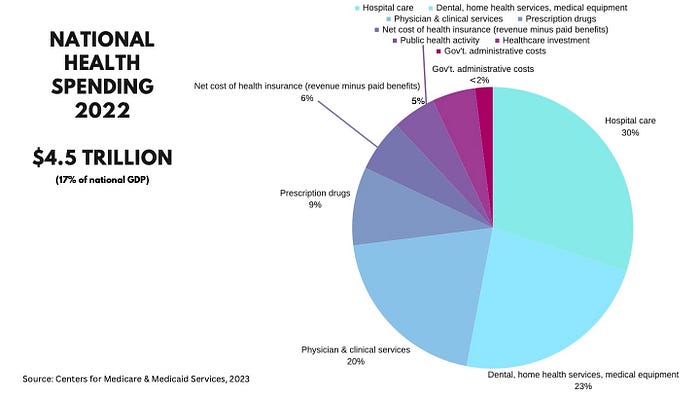End-of-Year Promo: Subscribe between December 22-31 & Get 3 Months Free!
Learn More
Table of Contents

Experience Better Practice Management Today!
Starting at $28.05/month
No Credit Card Required

Experience Better Practice Management Today!
Starting at $30/month
No Credit Card Required
Patient retention is the backbone of a thriving chiropractic practice.
When patients stay engaged with their treatment plans, they experience better health outcomes, and your practice benefits from steady revenue and long-term relationships. But when patients start missing appointments or dropping off entirely, it disrupts their care and impacts your bottom line.
Research suggests that the average chiropractic patient attends only about six sessions before discontinuing treatment, often before achieving full recovery.
Early signs of patient disengagement—such as skipped appointments, lack of communication, or declining treatment adherence—can indicate an impending drop-off.
This blog outlines key indicators of chiropractic patient drop-out and offers strategies to improve retention, ensuring both patient success and business stability.
Patient retention plays a crucial role in both treatment success and practice stability. Chiropractic care is most effective when patients follow through with their recommended treatment plans. When they drop off too early, they risk incomplete recovery, recurring pain, and a diminished quality of life. Long-term chiropractic care offers several benefits:
From a business standpoint, retaining patients is far more cost-effective than constantly acquiring new ones. Studies indicate that gaining a new patient can be up to five times more expensive than keeping an existing one. Patient retention also supports:
Focusing on retention benefits both your patients' well-being and your practice’s long-term success.
Chiropractic patient drop-out can happen for many reasons, but most cases come down to a handful of common issues. Identifying these early can help keep patients engaged and committed to their treatment plans.
Patients seek chiropractic care to relieve pain, improve mobility, or address chronic conditions. If they don’t experience noticeable improvements within the first few sessions, they may assume the treatment isn’t working.
Many conditions require ongoing care to achieve lasting results, but without clear communication on expected progress, patients may lose motivation.
Setting realistic expectations from the start and tracking progress through assessments or measurable milestones can help patients see the value in continuing treatment.
Chiropractic care is often an out-of-pocket expense, and patients may struggle to justify the cost, especially if they don’t immediately feel better.
In recent years, healthcare costs have been steadily increasing, placing a significant financial burden on patients. In 2022, health spending in the U.S. reached $4.5 trillion, or $13,493 per capita, marking a 4.1% increase from the previous year.

If patients view treatment as a financial burden rather than an investment in their health, they’re more likely to drop off. Practices can address this by discussing the long-term benefits, offering payment plans, or helping patients maximise insurance coverage.
Busy work schedules, family commitments, and long commutes can make it difficult for patients to attend regular appointments.
If scheduling feels like a hassle, even a motivated patient may eventually stop prioritising their care. Offering flexible appointment times, online booking, and automated reminders can make it easier for patients to stay on track.
On top of that, accommodating last-minute reschedules or providing weekend or evening slots can help those with tight schedules stay committed.
Patients need consistent engagement and reminders to stay motivated. If they don’t receive follow-up messages, appointment confirmations, or progress updates, they may feel forgotten and disengage.
Regular communication through text reminders, emails, or even personal check-ins from staff can improve retention.
Educating patients about their treatment plans, providing progress reports, and answering their concerns proactively also helps them feel supported and invested in their care.
First impressions matter, and a negative experience can drive patients away before they complete their treatment plan.
Long wait times, unfriendly staff, rushed appointments, or a lack of personal attention can all contribute to early drop-off. Ensuring a welcoming atmosphere, streamlined check-ins, and attentive service can make patients feel valued and more likely to return.
Simple gestures like remembering patient preferences, addressing concerns with care, and creating a comfortable clinic environment can significantly impact retention.
Understanding the early warning signs of patient disengagement is key to maintaining retention and ensuring patients receive the full benefits of their treatment plan. Identifying these signs early allows you to intervene before they disappear from your schedule altogether.
A missed appointment here and there is normal, but when it becomes a pattern, it’s a major red flag. Patients who frequently cancel or fail to show up may be losing confidence in their treatment plan, questioning the necessity of continued care, or facing obstacles that make attending appointments inconvenient. Some may intend to return but get caught up in other commitments, while others may be hesitant to formally say they are stopping treatment.
Following up promptly with a personal call or message can help re-engage these patients before they disappear from your practice entirely.
Disengagement isn’t always verbal—sometimes, a patient’s attitude, energy, and responsiveness during their visit indicate a declining commitment to their treatment plan. When a patient starts showing disinterest, it could mean they are feeling discouraged about their progress, unsure about the value of their visits, or even considering stopping care altogether. These signs often go unnoticed unless you actively observe body language and patient interactions.
Checking in with disengaged patients by asking open-ended questions about their expectations and concerns can help address their hesitation before they decide to stop care.
When a patient suddenly starts stretching out their appointments or booking fewer follow-ups, it’s often a sign that they’re phasing out their care. While life can get busy, a decline in scheduled visits that doesn’t align with their treatment plan could indicate that they’re deprioritising their chiropractic care or questioning its value.
Keeping track of appointment trends and checking in when patients alter their schedules can help prevent gradual drop-off.
Sometimes patients will express dissatisfaction openly, while others may give subtle indications that they’re unhappy with their experience. Whether it’s about the treatment itself, the clinic environment, or interactions with staff, unaddressed frustrations can lead to patient drop-off. Patients who are unsure or hesitant about their care but don’t feel comfortable voicing their concerns may slowly disengage instead.
Encouraging feedback and creating a comfortable space for patients to express their concerns can help resolve issues before they lead to a complete drop-off.
With rising healthcare costs, financial concerns are one of the top reasons patients discontinue care. Even those who value chiropractic treatment may reconsider if they perceive it as an unnecessary or unaffordable expense. If a patient frequently brings up cost-related concerns, they might be struggling to justify continued visits or considering alternative care options.
Having transparent conversations about the value of long-term care, offering flexible payment options, and helping patients navigate insurance claims can ease financial concerns and encourage commitment.
By recognising these early warning signs, chiropractic practices can take proactive steps to retain patients, improve their experience, and ensure they stay on track with their care.
Preventing patient drop-off requires a proactive approach. Many patients don’t leave because they’re unhappy but because they don’t fully understand the value of ongoing care, face scheduling or financial barriers, or don’t feel engaged enough in their treatment plan. Addressing these issues early ensures they remain committed to their chiropractic journey.
Patients often drop off when they don’t see immediate results or don’t fully understand why continued care is necessary. Chiropractic treatment is a long-term process, and without clear communication, patients may believe they’re done after a few sessions. The more informed they are, the more likely they are to stay engaged.
How to Improve Communication & Education:
Every patient has different needs, schedules, and financial situations. A rigid, one-size-fits-all treatment plan can make it difficult for some to commit long-term. Patients are more likely to continue care if their treatment plan accommodates their lifestyle.
How to Make Treatment More Patient-Friendly:
Patient retention is key to better health outcomes and a thriving practice. Proactive communication, personalized care, and early intervention help prevent drop-off. Many patients don’t intend to stop care—they simply get busy or forget to book.
A chiropractic practice management software like Noterro streamlines follow-ups, tracks engagement, and automates reminders, ensuring patients stay on track.
How to Keep Patients on Track:

A patient’s experience at your clinic can determine whether they continue care. If they feel rushed, ignored, or uncomfortable, they may start skipping appointments. Creating a welcoming and efficient environment encourages patients to return.
How to Enhance the Patient Experience:

Cost is one of the biggest reasons patients discontinue care, especially with rising healthcare expenses. If patients feel uncertain about pricing or think chiropractic care is too expensive, they may drop off—even if they see the benefits. Addressing financial concerns openly can help patients plan for their treatment.
How to Address Cost Concerns:
Manually tracking patient behaviour is challenging, especially in a busy chiropractic practice. Subtle signs of disengagement—like missed appointments, delayed rescheduling, or a decline in follow-up bookings—can go unnoticed until a patient has already dropped off.
This is where clinic management software plays a vital role in identifying at-risk patients early and helping chiropractors take action before they lose them.
A well-integrated clinic management system like Noterro can help chiropractors detect patterns in patient behaviour that indicate a risk of drop-off. By automating scheduling, reminders, and engagement tracking, such software makes it easier to spot early warning signs and intervene.

A chiropractic practice management system makes these processes seamless, offering an intuitive dashboard where chiropractors can instantly review patient engagement trends and adjust their retention strategies accordingly.
You might also like - 9 Strategies for Choosing The Right Clinic Management Software
Beyond tracking individual patient behaviour, clinic management software provides data-driven insights that help chiropractors understand broader trends within their practice. These analytics allow practitioners to refine their patient retention strategies based on actual engagement data.
With these tools, chiropractors can shift from reactive to preventative patient management. Whether using Noterro or another clinic management platform, using technology allows practitioners to track trends early, address concerns before patients disengage, and ultimately improve retention rates.
Also Read - 6 Ways Massage Therapy Software Reduces No-Shows & Cancellations
Patient retention is the foundation of a successful chiropractic practice. When patients stay engaged in their treatment plans, they experience better health outcomes, and your practice benefits from consistent revenue and stronger relationships.
However, retention requires more than just good treatment—it involves proactive communication, personalised care, and an overall experience that keeps patients coming back.
Addressing early warning signs such as missed appointments, reduced engagement, and financial concerns can prevent patients from dropping off before they complete their care.
Technology makes this process even more effective. With Noterro’s advanced tracking and reporting features, you can monitor patient engagement, identify drop-off risks early, and take proactive steps to keep patients on track.
Patient drop-off occurs when a patient discontinues care before completing their recommended treatment plan. This can happen due to missed appointments, financial concerns, scheduling conflicts, or a lack of perceived progress. Drop-off not only impacts the patient’s recovery but also affects the practice’s revenue and long-term growth.
Yes, technology streamlines patient management by automating appointment reminders, tracking attendance, and identifying early signs of disengagement. Clinic management software like Noterro helps chiropractors follow up with at-risk patients, improve communication, and maintain consistent engagement, ultimately reducing drop-off rates.
Data analytics provides insights into patient behaviour, identifying trends such as frequent cancellations or declining visit frequency. By analysing these patterns, chiropractors can take proactive steps to re-engage patients, adjust care plans, and improve scheduling strategies, leading to higher retention and better patient outcomes.
Tags



